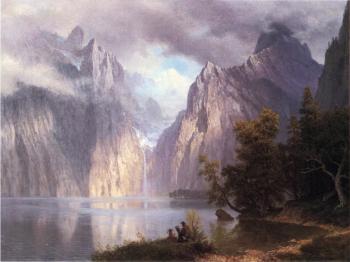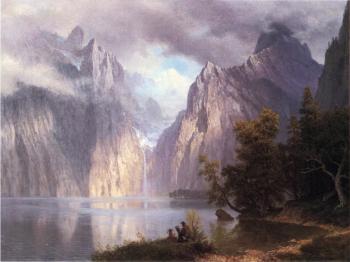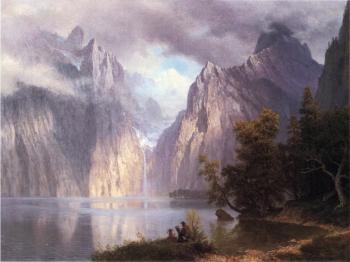In the early days of the western expansion, mountain men, trappers, surveyors, and explorers were some of the first to encounter the grand vistas of what would be the Western United States.
Among them was Albert Bierstadt, a prolific painter and one of the most celebrated landscape artists in the United States. Sharply detailed, vivid with color, and strikingly luminous, Bierstadt’s landscape paintings take the viewer on a surreal and enchanting voyage through his own experiences in the American wilderness.
Albert Bierstadt was part of the Hudson River School, a loose organization of like-minded individuals who developed landscape painting and a philosophy that was uniquely American.
In the 19th and early 20th centuries, American identity was linked heavily with the natural world. John Muir, Henry David Thoreau, Aldo Leopold, and Ralph Waldo Emerson provided popular reading material. In this environment, Albert Bierstadt and the Hudson River School filled a niche: They displayed the sacred qualities of the land on canvas to illuminate what authors had penned.
Among them was Albert Bierstadt, a prolific painter and one of the most celebrated landscape artists in the United States. Sharply detailed, vivid with color, and strikingly luminous, Bierstadt’s landscape paintings take the viewer on a surreal and enchanting voyage through his own experiences in the American wilderness.
Albert Bierstadt was part of the Hudson River School, a loose organization of like-minded individuals who developed landscape painting and a philosophy that was uniquely American.
In the 19th and early 20th centuries, American identity was linked heavily with the natural world. John Muir, Henry David Thoreau, Aldo Leopold, and Ralph Waldo Emerson provided popular reading material. In this environment, Albert Bierstadt and the Hudson River School filled a niche: They displayed the sacred qualities of the land on canvas to illuminate what authors had penned.







